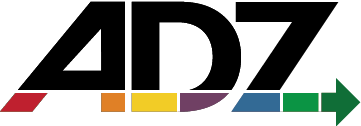Enterprise Roles
- Values & Goals
- Clear Enterprise vision
- Accountability to my team
- Agile mindset
- Willing to learn & grow
- Flexibility
- Committed to vision
- Attention to results
- Customer focused
- Adaptable
- Accountable, responsible
- Environmental Responsibility
- Product & Impact
- Enterprise purpose
- 3 Year OKRs
- Rolling 3 year roadmap
- Market feedback loops
- Market Share growth plans
- Enterprise dashboard
- Executive working agreement
- Share price
- Profitability
- Leadership & Culture
- Enterprise Values & Culture
- Shared vision/goals
- Market Perception
- Trust, transparency & safety
- Servant leadership culture
- Conscious Leadership culture
- Continuous improvement culture
- Listen to all perspectives
- Clear communication of goals
- Top to bottom and back collaboration
- Development of future leaders
- Accountable to the board
- Shareholder perception
- Portfolio health & collaboration
- Executive coaching/mentorship
- Sense & Response culture
- Markets & Environment
- Portfolio health
- Roles & Responsibilities
- Effective Lean processes
- Enterprise Organizational architecture
- Collaboration space
- Collaboration tools
- Unified Enterprise process
- Enterprise Lean budgeting
- Enterprise structure
- Aligned incentive structure
- Global Legal, Compliance & Regulatory
- Acquisition/Divestiture opportunities
- Environmental and Humanitarian Impact
The Enterprise Holon refers to a company that has grown so large - usually by a combination of internal growth, mergers, and acquisitions - that it has multiple Lines of Business, Product Families, and Technology Platforms. Companies of this size frequently struggle with maintaining alignment across all of their teams and organizations, and are susceptible to falling into a siloed structure. This is a challenge we see across the industry, particularly in larger enterprises. Information does not flow freely from silo to silo, planning cadences are often not aligned, and each silo looks to optimize for their needs as opposed to optimizing for the whole enterprise. Breaking the silos is the most important and also the most challenging endeavor an enterprise can take. This involves reorganizing around the flow of customer centric value necessitating the dissolution of some organizations, and the removal and reinvention of many roles.
Enterprise Coach
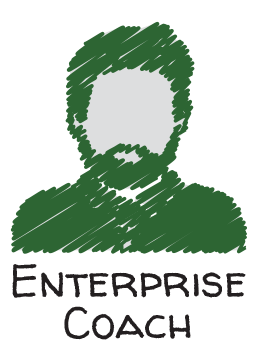 Enterprise coaches in this context are different from the legion of Linked In profiles that bear that role description. This is a coach who works directly with the C-Suite team, their direct reports, and potentially the board. While they should have a Lean/Agile mindset, and will advise on decisions such as the best fit in terms of Agile methodologies and tooling, their main objective is to facilitate an environment of trust, transparency, safety, alignment, and accountability. They help the leaders of the enterprise to clarify their objectives, develop implementation and communication plans, and monitor feedback loops enabling any necessary pivots to happen quickly and effectively. The creation of a healthy corporate culture depends on a healthy leadership team that is connected to what is actually happening on the ground, and can respond to employee needs. In order to command the attention and gain the trust of the very accomplished people likely to be in these leadership roles, this individual needs to be equally accomplished, a strong leader, and have excellent communication and listening skills.
Enterprise coaches in this context are different from the legion of Linked In profiles that bear that role description. This is a coach who works directly with the C-Suite team, their direct reports, and potentially the board. While they should have a Lean/Agile mindset, and will advise on decisions such as the best fit in terms of Agile methodologies and tooling, their main objective is to facilitate an environment of trust, transparency, safety, alignment, and accountability. They help the leaders of the enterprise to clarify their objectives, develop implementation and communication plans, and monitor feedback loops enabling any necessary pivots to happen quickly and effectively. The creation of a healthy corporate culture depends on a healthy leadership team that is connected to what is actually happening on the ground, and can respond to employee needs. In order to command the attention and gain the trust of the very accomplished people likely to be in these leadership roles, this individual needs to be equally accomplished, a strong leader, and have excellent communication and listening skills.
- Values & Goals
- Powerful leader
- Servant Leader Mindset
- Coach, Enabler
- Agile expertise
- Adaptable & flexible
- Proactive problem solver
- Highly Organized
- Negotiation/Conflict resolution
- Responsible, accountable
- Charismatic
- Active listener
- Product & Impact
- Helps create clarity around objectives/vision etc.
- Empirical Observation of progress & improvement
- Leads by example
- Documentation outlining choices and recommendations
- Creates educational tools
- Leadership & Culture
- Creates trust relationships with leaders
- - Safe, Collaborative environment
- - Accountability & Integrity
- Facilitates OKRs
- Motivates & inspires
- Promotes collaboration
- Creates alignment towards common purpose
- Helps create a healthy culture
- Promotes good communication
- Helps set cultural norms for the enterprise
- Markets & Environment
- Advise on the best use of Agile methodologies
- Facilitates/sets up workshops & offsites
- Value Stream/Impact Mapping
- Systemic transparency
- Helps promote flow
- Critical thinking tools (systems thinking, etc.
CEO

The CEO is arguably the most difficult role to fill in any enterprise. The combination of intrinsic skills and personality qualities combined with just the right life experience (including failures), combined with being just the right fit for the company is a daunting endeavor to say the least. The Harvard Business Review suggests that there are 4 main behaviors that are key to choosing a successful CEO.
- Speed in decision making
- Engaging authentically to gain buy-in
- Proactively adapting
- Reliably delivering results
In addition to those 4 behaviors, we’re seeing the ability to assess and navigate deep, lasting cultural change is a prominent need as companies transition to a new way of working. Company culture has been listed as the top impediment to scaling Agile transformations for the past several years according to the annual State of Agile Report, and as we know, culture starts at the top. Creating and partnering with a healthy C-Suite Team in order to get a full picture of enterprise needs and executing on those needs with the right feedback loops in place is what’s needed to create an environment of success.
- Values & Goals
- Visionary
- Purpose driven
- Inspirational Leader
- Result Oriented
- Decisive
- Collaborative
- Systems thinker
- Embody the brand
- Incorporates all perspectives
- Resilient
- Self aware
- Optimistic
- Courageous
- Lifelong learner
- Approachable
- High emotional intelligence
- Charismatic
- Product & Impact
- Approves product strategy
- Sets business targets
- Define the Vision/Mission
- Owns Business results
- Sets long term strategy
- Sets strategic deadlines
- Partnerships & Acquisitions
- Owns Profit and Loss
- Leads by example
- Rapid decision making
- Leadership & Culture
- Speaks his/her mind
- Understands when to be vulnerable and when to show strength
- Knows when to ask for help
- Open relationship with the board
- Public & political perception
- Inspires confidence
- Embodies enterprise culture & values
- Socially savvy
- Networks and creates partnerships
- Markets & Environment
- Understands impact of their actions
- Full understanding of internal and external systemic patterns
- Environmental responsibility
- Fosters diversity & inclusion
CTO/CIO
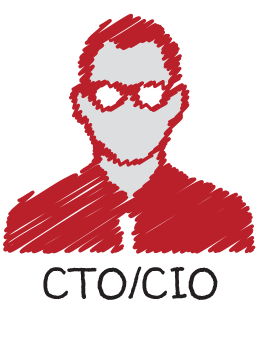
This function performed here is usually done by the CTO, but in some cases, it is carried out by the CIO or a partnership between the two. If the CEO owns the visionary direction, the CTO/CIO would own the implementation strategy both internally and externally, requiring technical expertise and understanding of the movements of the market. This involves things like:
- Connecting technology to business & market needs
- Choice of technology frameworks
- System architecture & choice of hardware
- Data capture strategy
- Strategic partnerships
The primary point of collaboration here is to decide which technologies best suit the business needs, now and in the future, and aligning them to proposed product strategies for competitive advantage.
An example is Apple’s decision to create their own M1 chip. This potentially risky strategy turned out to be very successful as a business enabler.
In order to maintain ongoing system health while supporting innovation, the CIO/CTO must establish teams of architects and subject matter experts across the enterprise to both evolve and support their technological and strategic decisions.
- Values & Goals
- Result Oriented
- Rapid decision making
- Collaborative
- Inspirational Leader
- Visionary Creative Motivator
- Value/Impact mindset
- Systemic design thinker
- Flexible
- Root cause focused
- Product & Impact
- Shareholder Reports
- Technology metrics
- Leadership & Culture
- Aligns with business objectives
- Speaks his/her mind
- Knows when to delegate
- Open relationship with the board
- Inspires confidence
- Embodies enterprise culture & values
- Networks and creates partnerships
- Markets & Environment
- Identifies Market Needs
- Determines competitive strategy
- Owns Development Value Stream strategy
- Owns Service Management
- Allows freedom within guard rails
- Sets Talent allocation/strategy
- Defines uplift strategy
- Sets Technical strategy
- Negotiates technical contractual obligations
- Responsible for compliance/regulatory
- Markets enterprise technical vision
CFO
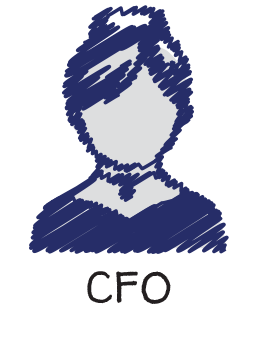 The CFO, as the guardian of shareholder value often has the unenviable and thankless task of being the “adult in the room.” The importance of this role cannot be understated, a strong, trustable CFO who is aligned with the enterprise purpose can boost the creativity of their team and drive increased innovation. This involves understanding that healthy financials are a means to an end, not the end goal in of themselves. A CFO who has the full trust of their team to be the final voice of reason allows her/his team to push the envelope as far as they like. The team trusts that if they get into unrealistic scenarios, or take on too much risk, the CFO will keep them grounded.
The CFO, as the guardian of shareholder value often has the unenviable and thankless task of being the “adult in the room.” The importance of this role cannot be understated, a strong, trustable CFO who is aligned with the enterprise purpose can boost the creativity of their team and drive increased innovation. This involves understanding that healthy financials are a means to an end, not the end goal in of themselves. A CFO who has the full trust of their team to be the final voice of reason allows her/his team to push the envelope as far as they like. The team trusts that if they get into unrealistic scenarios, or take on too much risk, the CFO will keep them grounded.
Additionally, the CFO has a role to play in establishing a healthy financial culture by not only looking at “did you get results,” but “how did you get those results?” It’s easy to say NO, but encouraging the kind of collaboration described above across the entire enterprise, can transform how products are brought to the market. People in financial roles who have enough awareness of the market and business goals can help the business add fiscal responsibility to ideas that might not otherwise make the cut.
- Values & Goals
- Organized
- Strong Analytical skills
- Discipled dynamic and flexible
- Adaptable
- Value/Impact mindset
- Systemic mindset
- Proactive communicator
- Global political & economic awareness
- Product & Impact
- Owns Financial plan
- Rapid decision making
- Public Financial reporting
- Leadership & Culture
- Speaks his/her mind
- Keeps team financially responsible
- Knows when to ask for help
- Open relationship with the board
- Inspires confidence
- Embodies enterprise culture & values
- Investor & auditor relationships
- Knows when to delegate
- Markets & Environment
- Profit and Loss control
- Enterprise Investment Strategy
- Financial system oversight
- Sets budgets for portfolios
- Compliance obligations
- Contractual obligations
- Sets financial and legal standards
- Efficiency and process improvement
- Stays ahead of new regulations
- Mergers & Acquisitions
- Accounting Policies
- Manages business risks
CPO/CHRO
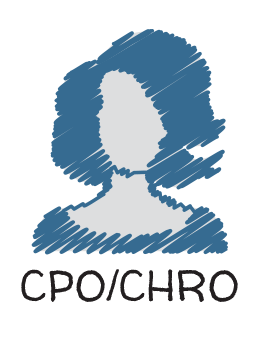 Successful Agile transformations require a re-imagining of roles, career paths and incentive structures, this is where the Chief People Officer or Chief Human Resources Officer plays a key role. What is the career path for Scrum Masters and internal coaches? How can we change role definitions to better fit the Agile mindset? Do current incentive structures promote individual success over the success of the organization as a whole? Do current cultural norms support aspirational values needed to sustain the transformation? Without these structural changes, any process improvements will be undermined as habitual ways of working and relating re-establish themselves within the legacy culture.
Successful Agile transformations require a re-imagining of roles, career paths and incentive structures, this is where the Chief People Officer or Chief Human Resources Officer plays a key role. What is the career path for Scrum Masters and internal coaches? How can we change role definitions to better fit the Agile mindset? Do current incentive structures promote individual success over the success of the organization as a whole? Do current cultural norms support aspirational values needed to sustain the transformation? Without these structural changes, any process improvements will be undermined as habitual ways of working and relating re-establish themselves within the legacy culture.
- Values & Goals
- Compassionate
- Strategic
- Excellent communicator
- Problem solver
- Aligned to strategy/vision
- Knowledge of the business
- Strong decision maker
- Aware of silo pain
- Product & Impact
- Owns performance KPIs
- Handles ethics violations
- Training
- Leadership & Culture
- Works with other leaders to understand needs
- Recruiting
- Handles complaints
- Interviewing
- Transmit company values
- Ensures a respectful, professional workplace
- Build community
- Awareness of current culture (steward)
- Facilitates business transformation
- Markets & Environment
- Defines & updates roles
- Owns compensation/reward systems
- Sets salary standards
- Defines career path
- Onboarding
- Defines benefits (medical, vacation etc.)
- Defines job portal
- Defines behavioral norms
- Manages internal budget
- Owns personal development tracks
- Payroll, etc. (administration)
C-Suite Team
 The C-Suite Team sets the tone and cadence for the entire enterprise. Their full commitment and investment in Enterprise Agility and the tough choices necessary to evoke lasting change is critical to a successful transformation. Making those choices may require putting one’s own agenda aside for the benefit of the enterprise as a whole, such as cutting the CTO’s technology budget, or slowing down the CEO’s business growth plan. Building the kind of trust and collaboration in this team that allows for that kind of give and take relies both on choosing the right person for each role, and ongoing commitment and accountability. Choosing the highest performing or best well known people can be tempting, but rarely results in a harmonious team. Selecting diverse perspectives, strengths, and personality types will be more likely to create a balanced team that checks and supports each other. The creation of a healthy corporate culture depends on a healthy leadership team that is connected to what is actually happening on the ground and can respond to employee needs.
The C-Suite Team sets the tone and cadence for the entire enterprise. Their full commitment and investment in Enterprise Agility and the tough choices necessary to evoke lasting change is critical to a successful transformation. Making those choices may require putting one’s own agenda aside for the benefit of the enterprise as a whole, such as cutting the CTO’s technology budget, or slowing down the CEO’s business growth plan. Building the kind of trust and collaboration in this team that allows for that kind of give and take relies both on choosing the right person for each role, and ongoing commitment and accountability. Choosing the highest performing or best well known people can be tempting, but rarely results in a harmonious team. Selecting diverse perspectives, strengths, and personality types will be more likely to create a balanced team that checks and supports each other. The creation of a healthy corporate culture depends on a healthy leadership team that is connected to what is actually happening on the ground and can respond to employee needs.
- Values & Goals
- Committed to the enterprise vision
- Demonstrates commitment & responsibility
- Proactively acts & communicates
- Willing to learn & grow
- Economic & Customer focused
- Conscious Leader
- Leads by example & mentorship
- Subject matter expertise
- Fiduciary responsibility
- Thought leader
- Expert negotiations
- Product & Impact
- Enterprise OKRs
- Enterprise roadmaps
- Financial Performance reporting
- Internal communication artifacts
- Advertisements
- Prioritization
- Investment strategies
- Leadership & Culture
- Shares responsibility toward enterprise goal
- Promotes healthy Culture
- Creates a feeling of safety
- Defines best practices
- Innovation & Growth culture
- Business & tech partnership
- Supports emerging needs
- Empowers and enables
- Transparent, overcommunication
- Seeks collaboration
- Creates external strategic partnerships
- Enterprise communications
- Public communications & appearances
- Markets & Environment
- Budget allocation
- Re-imagines Status quo
- Vendor approval
- Mergers & acquisitions
- Sets enterprise standards
- Enterprise value streams
- Organizational structure
- Enables optimal flow
- Evolves roles & responsibilities
- Impact on market(s)
- Incentivizes performance & collaboration
- Systemic innovation
- Marketing
- Brand promotion



